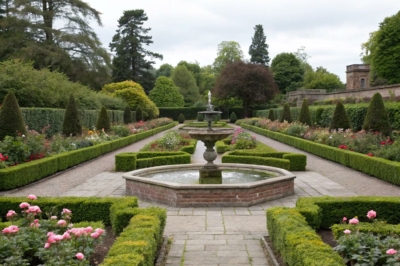1. Utilize Geometric Patterns
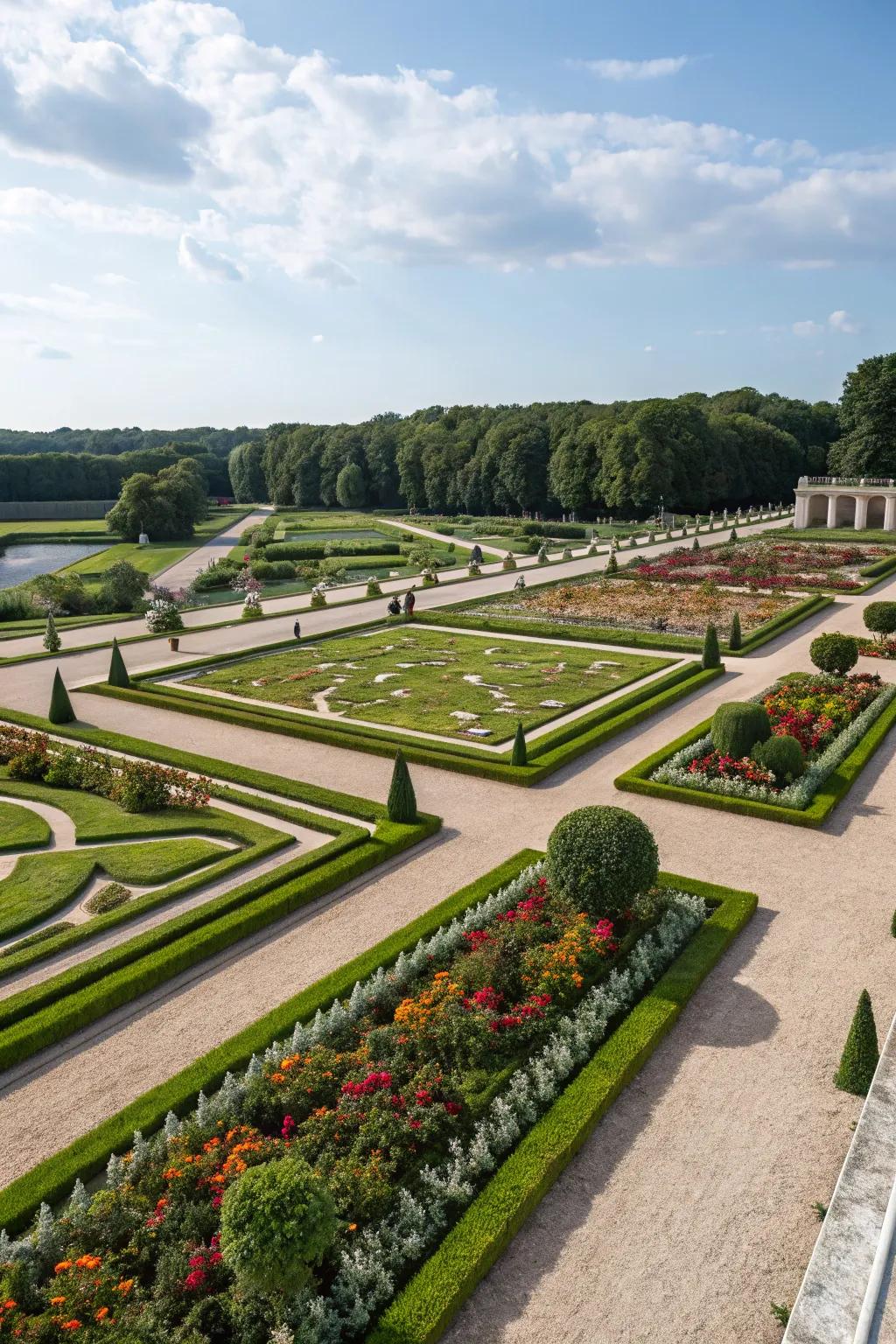
Design with geometric patterns for a classic, timeless look. I often use circles and squares to give my garden beds a neat, organized appearance.
A few choices to try:
- Garden Edging Stones: Enhance your garden’s design with durable edging stones. Create crisp, defined borders effortlessly.
- Garden Design Templates: Use design templates to achieve precise geometric patterns for a sophisticated garden layout.
- Decorative Gravel: Layer decorative gravel for texture and form stunning geometric paths in your garden.
2. Define with Hedges

Use hedges like boxwood to create clear borders and add an elegant touch. In my garden, they provide a perfect backdrop for colorful blooms.
Give these a look:
- Boxwood Hedge Plants: Enhance your garden’s elegance with lush boxwood hedges, perfect for defining outdoor spaces.
- Electric Hedge Trimmer: Achieve precise hedge shapes effortlessly with a reliable electric hedge trimmer in your garden.
- Pruning Shears: Maintain neat and tidy hedges with sharp and durable pruning shears for meticulous gardeners.
3. Embrace Symmetry

Start with symmetry to give your garden a structured and balanced feel. I love how symmetrical designs can bring a sense of peace and order to any space.
You might give these a try:
- Classic Boxwood Hedge Plants: Enhance garden symmetry with lush boxwood hedges for that clean, elegant line.
- Elegant Garden Fountains: Add focal points with symmetrical fountains, bringing tranquil sounds and visual interest to your garden.
- Formal Garden Pathway Edging: Define your garden’s structure with classic pathway edging for a visually balanced look.
4. Use Mirrors for Illusion
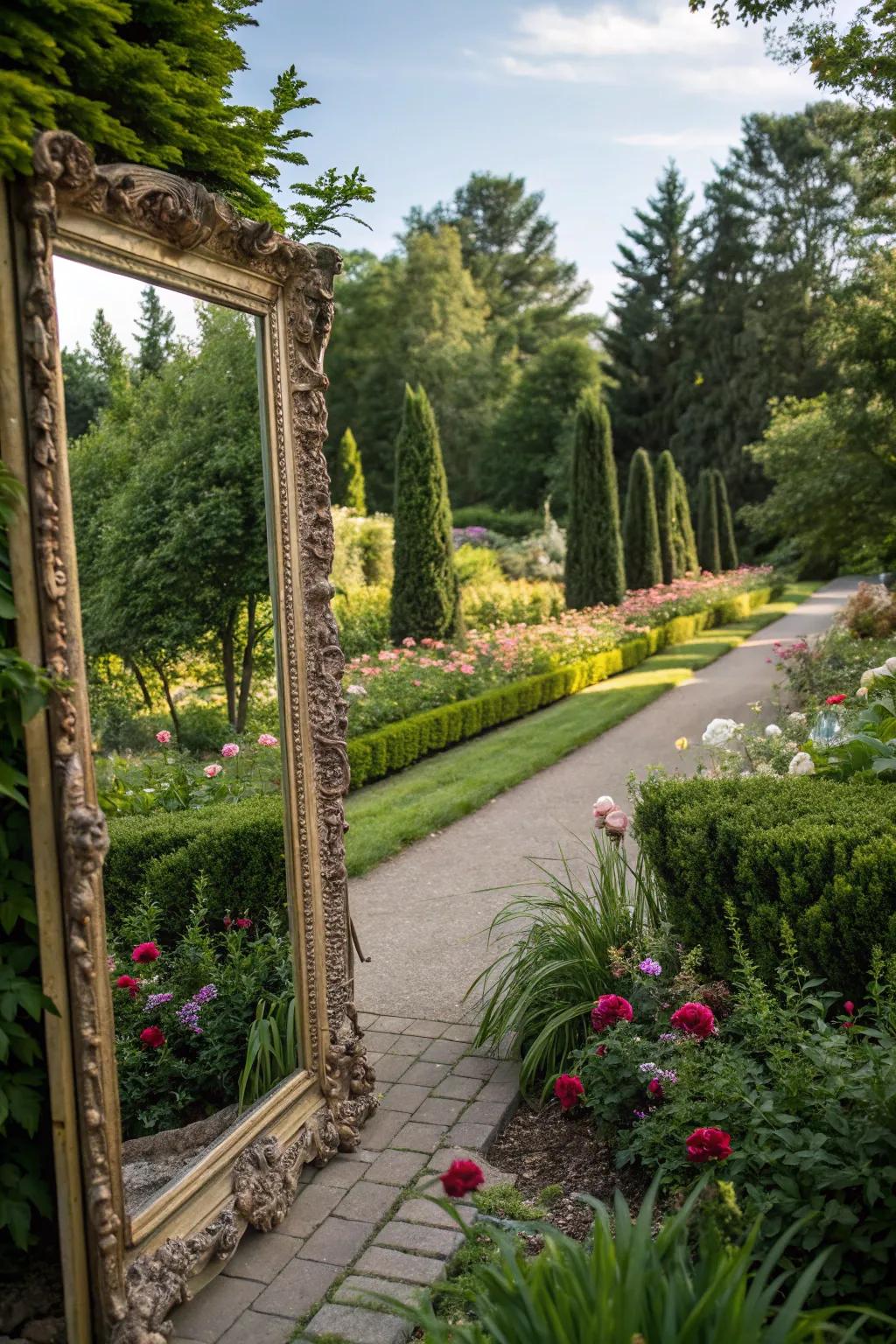
Place mirrors strategically to make small gardens feel larger. I once used a mirror in a narrow space, and it felt twice as big!
May just do the trick:
- Large Decorative Garden Mirror: Enhance your garden’s space effortlessly with this elegant mirror. Create depth and charm instantly!
- Ornate Garden Mirror with Gold Frame: Add a touch of elegance to your garden with this beautiful ornate gold-framed mirror.
- Weatherproof Outdoor Mirror: Install this durable weatherproof mirror to make your garden feel expansive and inviting.
5. Design a Parterre
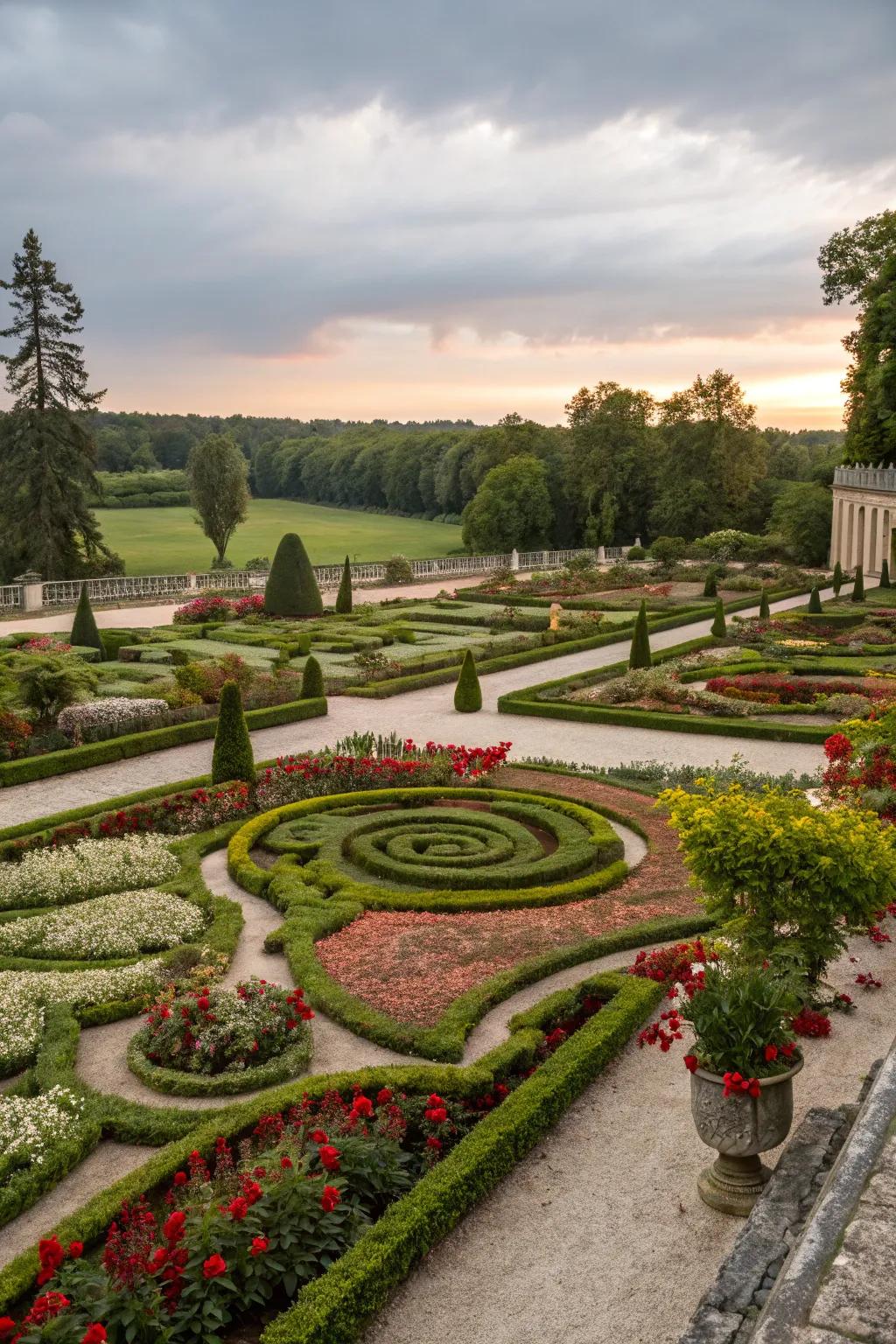
A parterre garden adds intricate beauty with its ornamental designs. I love how these low, patterned gardens can elevate any space.
Possibly handy products:
- Decorative Garden Edging: Define your parterre’s shape with elegant edging, enhancing its structure and visual appeal.
- Topiary Frames: Create stunning topiary shapes to add vertical interest and elegance to your parterre design.
- Flower Bulb Mix: Introduce vibrant colors and season-long blooms with a diverse mix of flower bulbs.
6. Introduce Classical Elements
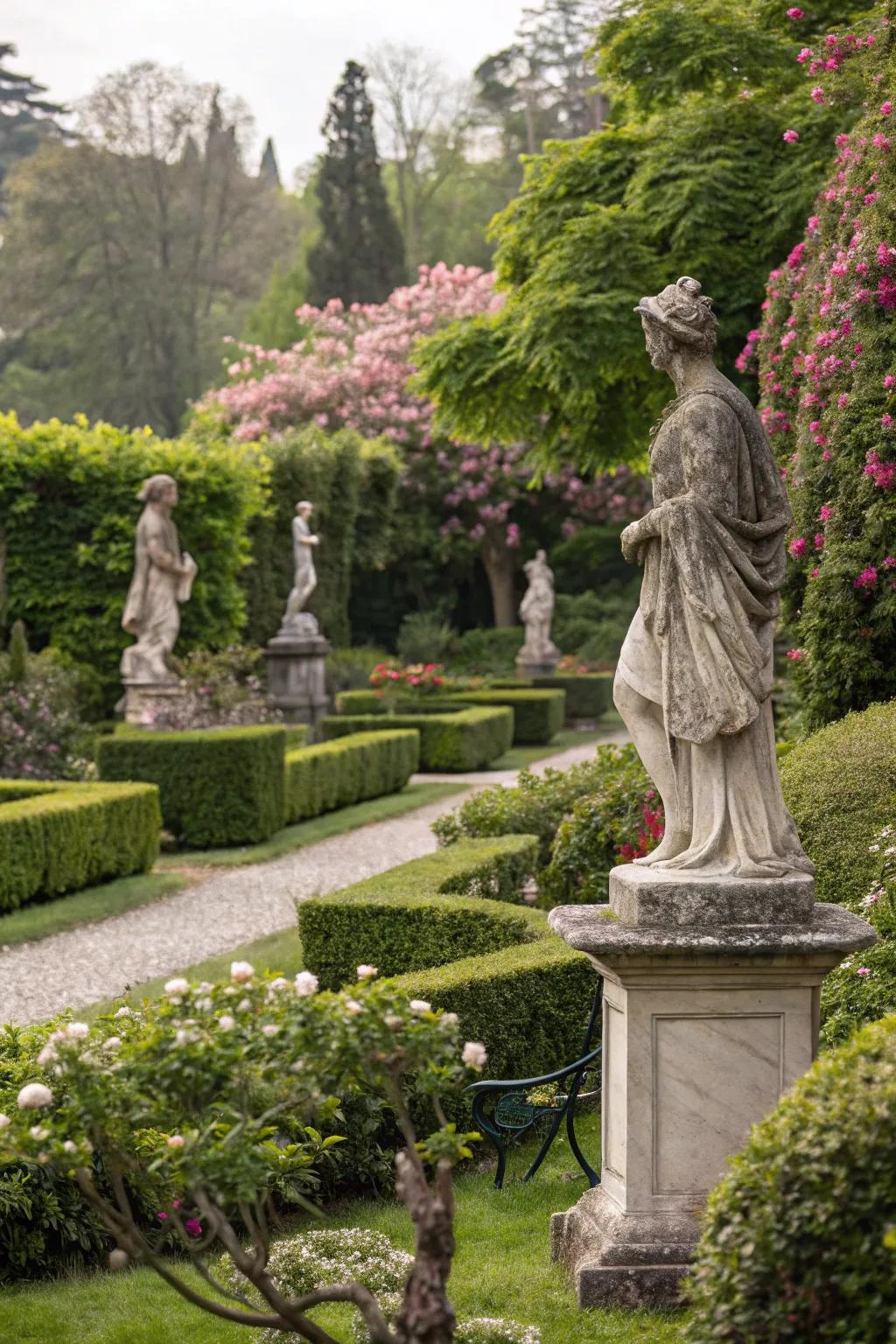
Use classical elements like statues or urns to add elegance. These touches can make your garden feel like a timeless masterpiece.
Items that may come in handy:
- Classic Garden Statue: Elevate your garden’s elegance with a classic statue, creating a timeless focal point.
- Decorative Urn: Enhance your garden’s aesthetic with a decorative urn, providing a sophisticated touch.
- Marble Pedestal: Place your garden accents on a marble pedestal for an elegant, elevated presentation.
7. Install an Archway
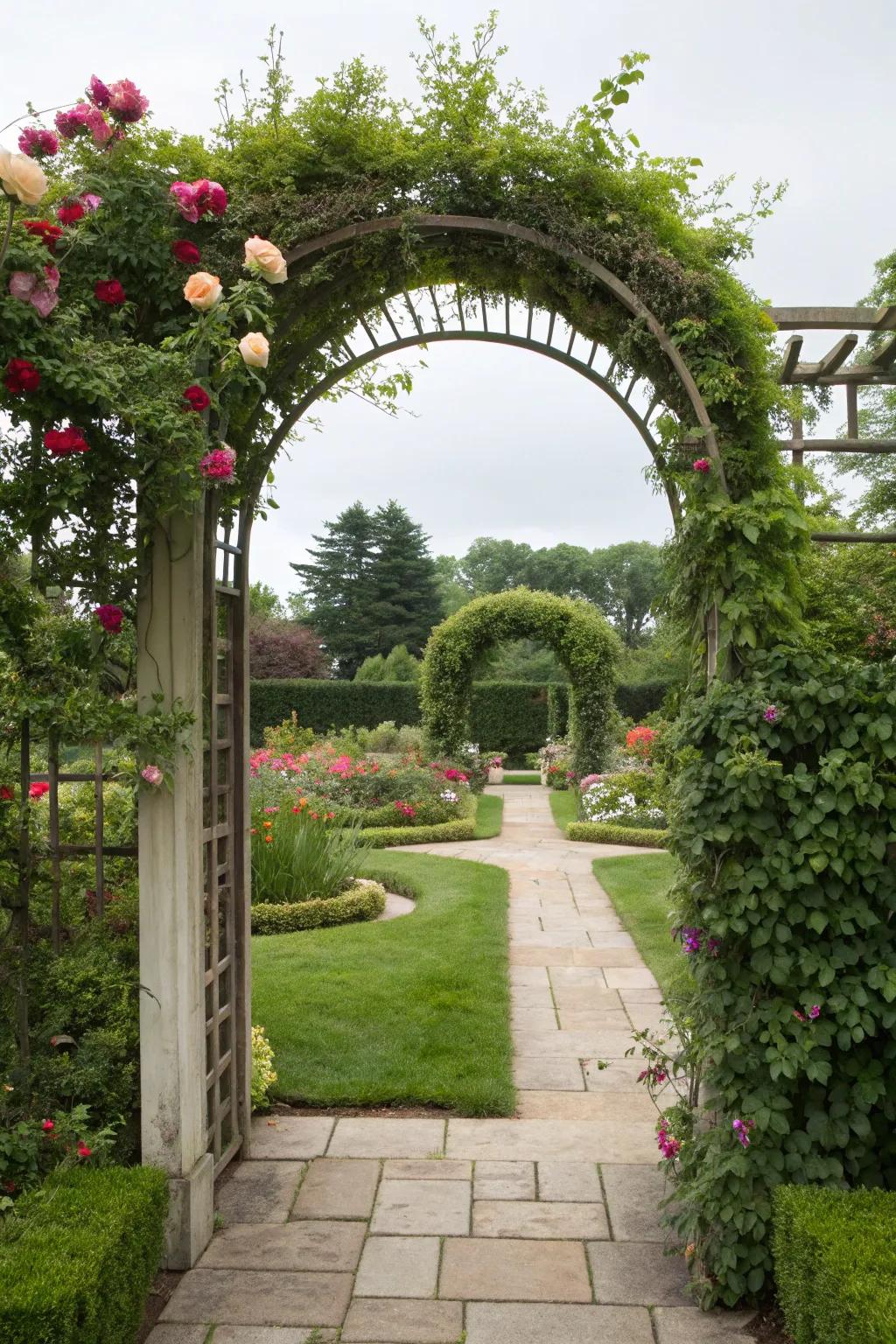
Add an archway for a grand entrance or focal point. In my garden, arches are gateways that invite exploration and wonder.
A few relevant products:
- Decorative Garden Archway: Transform your garden with a decorative archway for added elegance and inviting charm.
- Climbing Plant Support Arch: Enhance your garden’s beauty by supporting climbing plants with a stylish arch.
- Metal Garden Arbor: Create a stunning entry with a durable metal arbor for a timeless garden look.
8. Limit Your Palette
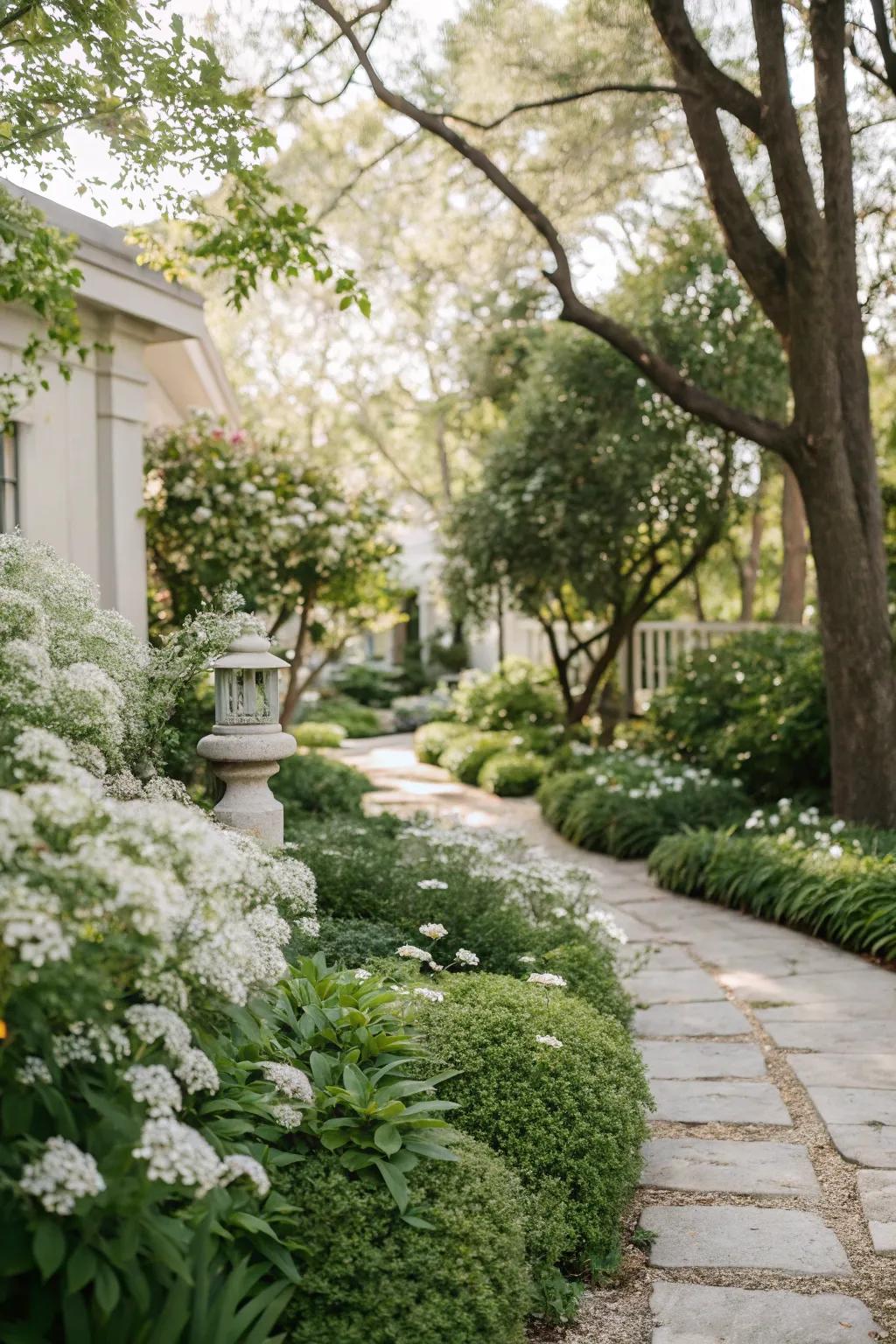
Stick to a simple color palette for a cohesive look. Choosing just a few colors can make a big impact in creating a serene atmosphere.
Consider these options:
- White Garden Flowers Seed Packets: Cultivate a serene garden by planting these elegant white flowers, enhancing your outdoor ambiance.
- Neutral Stone Garden Path Pavers: Transform your garden path with these neutral-toned pavers for a cohesive, elegant look.
- Simple Outdoor Garden Lantern: Illuminate your garden with a simple lantern, adding charm and subtlety to your outdoor space.
9. Combine Formal and Wild
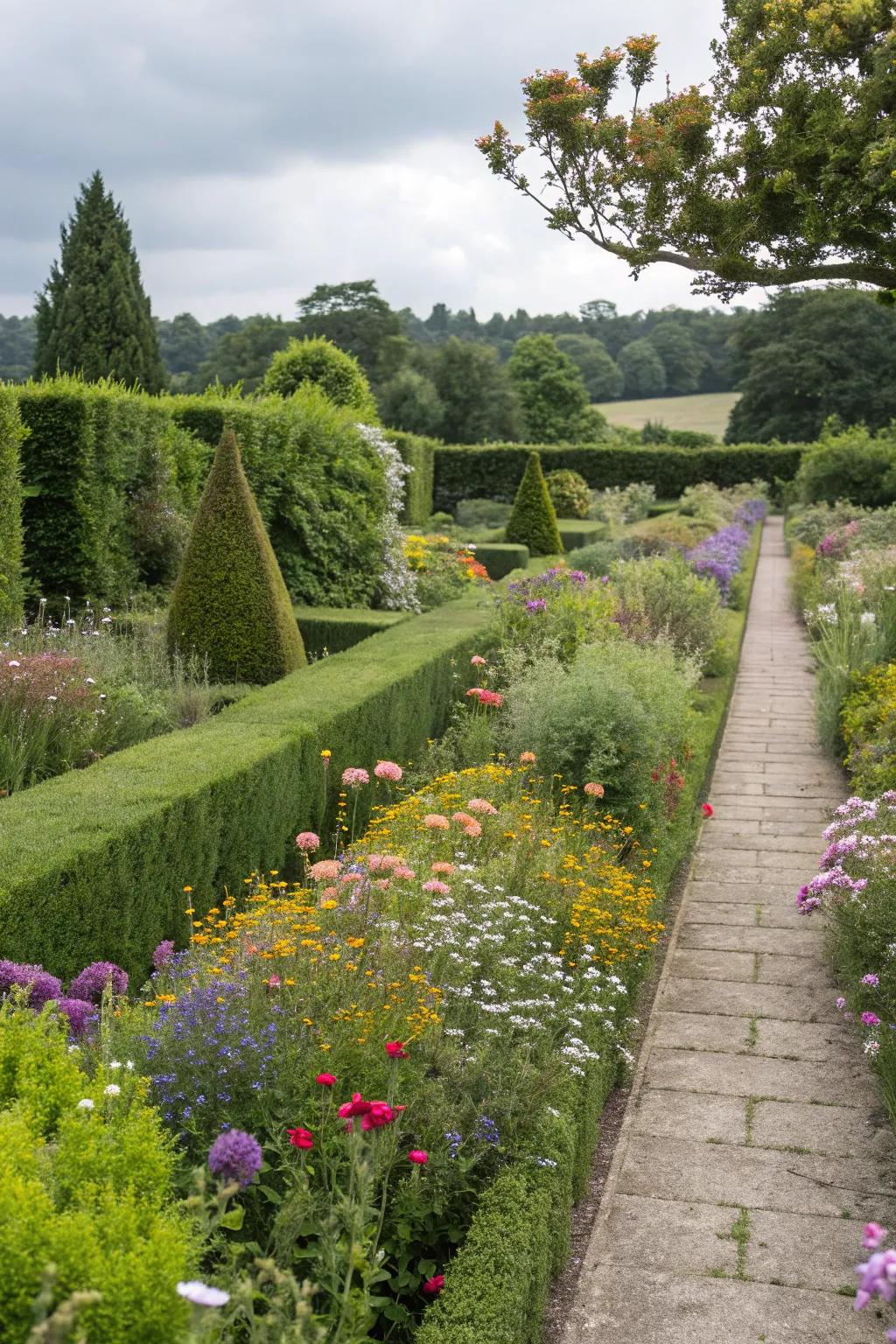
Mix formal elements with wildflowers for contrast. I love how a touch of wildness can soften and enrich a structured garden.
These products might help:
- Garden Edging Kit: Enhance structure with a durable garden edging kit, seamlessly blending formal and wild elements.
- Wildflower Seed Mix: Add vibrant wildflowers to your garden for a colorful contrast to formal hedges and paths.
- Topiary Gardening Shears: Maintain precise shapes in topiary, harmonizing formal and spontaneous beauty in your garden.
10. Establish a Focal Point
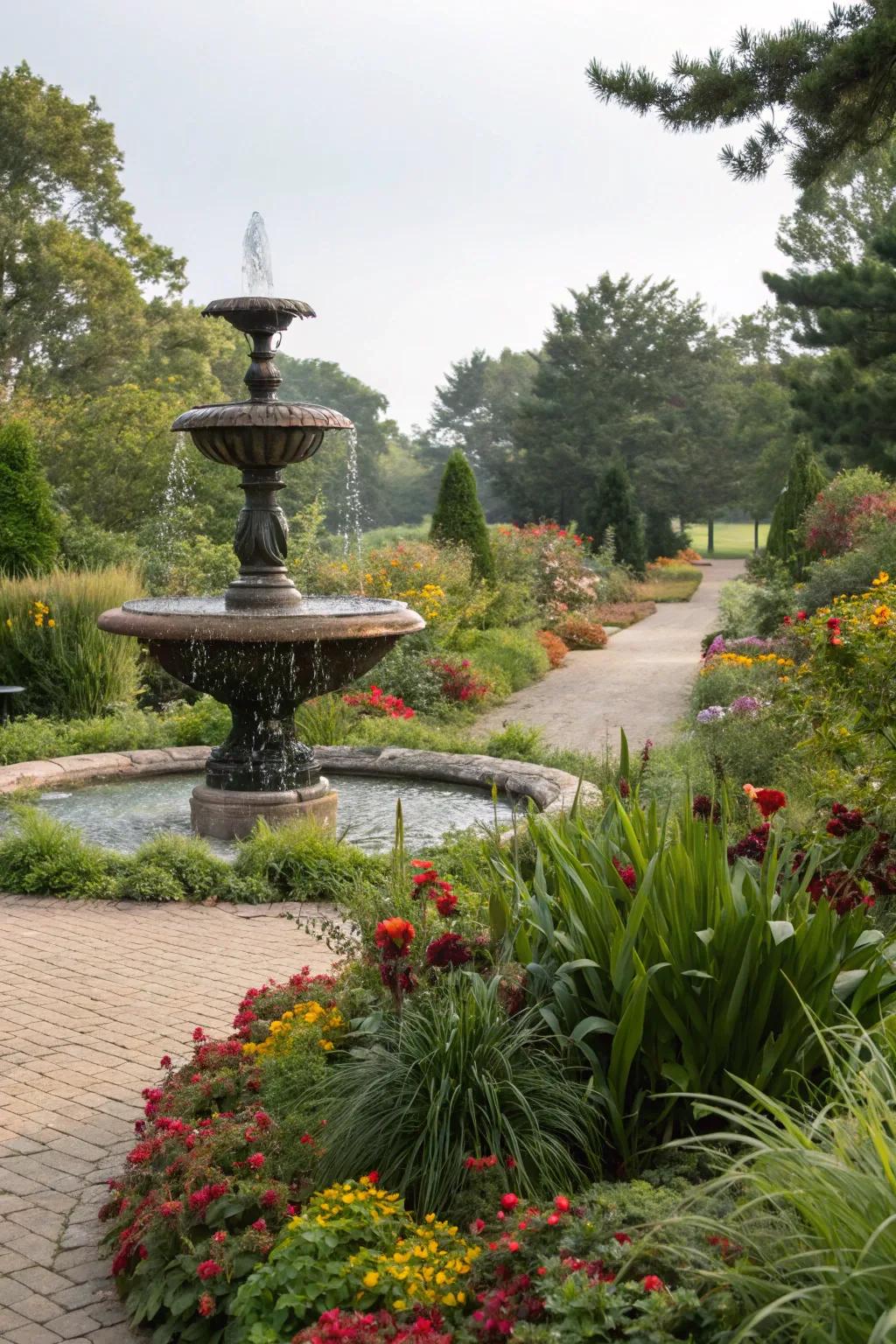
Choose a focal point like a statue or fountain to draw the eye. In my experience, a stunning centerpiece can transform the entire garden.
Check these products out:
- Garden Water Fountain: Enhance your garden with an elegant water fountain to create a relaxing, serene atmosphere.
- Outdoor Garden Statue: Add charm to your garden with a timeless statue to captivate and inspire every visitor.
- Solar Water Feature Kit: Illuminate your garden with a solar water feature for an eco-friendly, enchanting focal point.
11. Incorporate Water Features
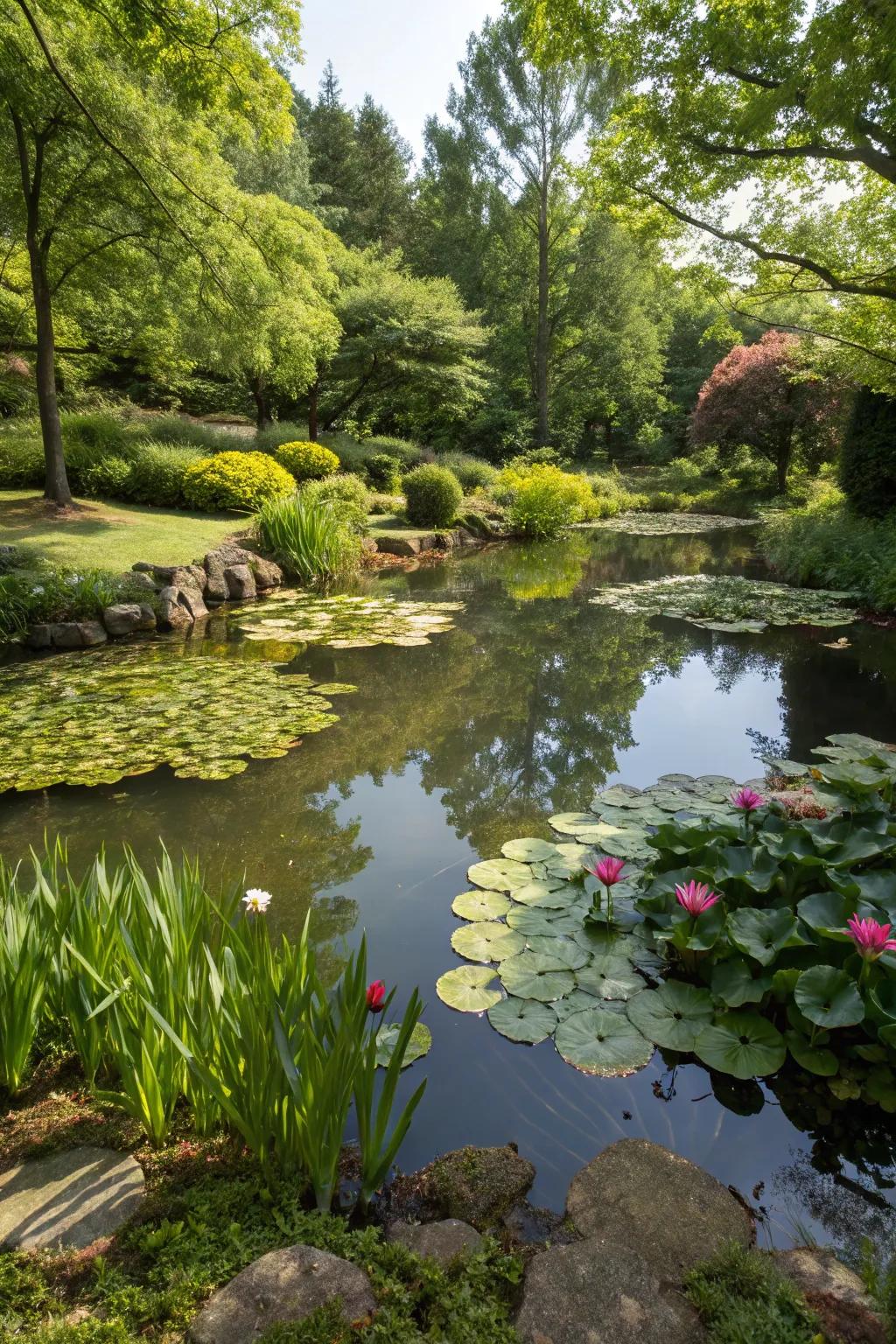
Add a small pond or water feature for tranquility and charm. In my garden, the sound of water is like a gentle invitation to relax.
Might be a good match:
- Outdoor Garden Water Fountain: Introduce serenity with this elegant water fountain, perfect for creating a peaceful garden oasis.
- Small Backyard Pond Kit: Easily install a charming pond to elevate your garden’s tranquility and natural beauty.
- Solar-Powered Water Feature Pump: Enhance garden aesthetics sustainably with a solar-powered pump for your pond or fountain.
12. Build with Natural Materials
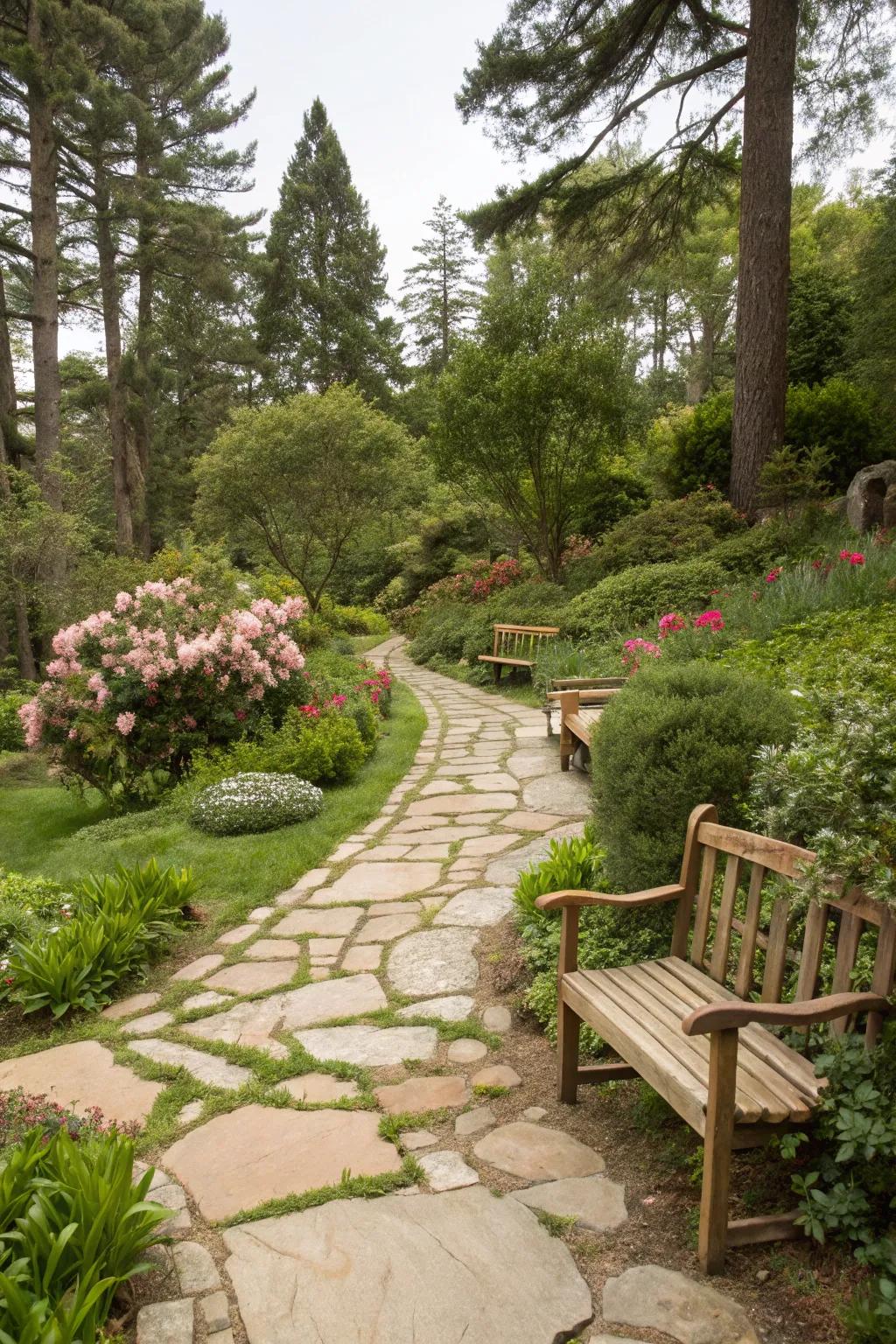
Incorporate natural materials for a harmonious feel. Stone and wood blend beautifully into the garden, creating a rustic yet formal look.
Some handy options:
- Natural Stone Paving Tiles: Enhance your garden path with durable stone tiles for a rustic, elegant aesthetic.
- Wooden Garden Bench: Add charm and comfort to your garden with a beautifully crafted wooden bench.
- Rustic Wooden Planters: Incorporate wooden planters to blend seamlessly with natural garden surroundings.
13. Create Pathway Charm
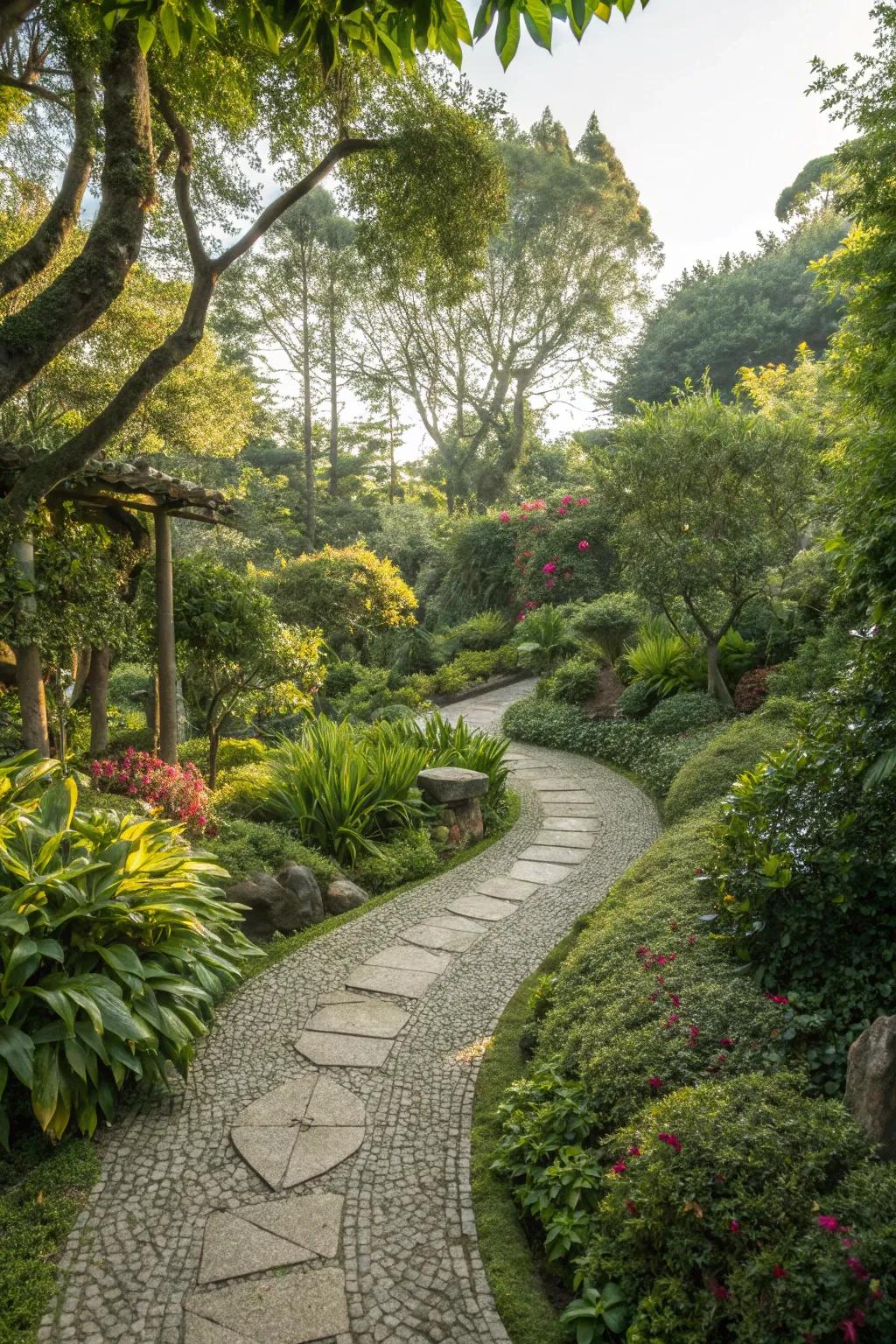
Lay down gravel or stone pathways to guide guests through your garden. I love how paths can create a sense of journey and discovery.
Products that could assist:
- Decorative Gravel for Pathways: Enhance your garden’s charm with decorative gravel, creating inviting and stylish pathways.
- Stone Pavers for Garden Paths: Lay down stone pavers to guide guests with elegance and durability through your garden.
- Garden Pathway Edging: Define your pathway with edging to maintain clean lines and prevent gravel spillage.
14. Add Seasonal Blooms
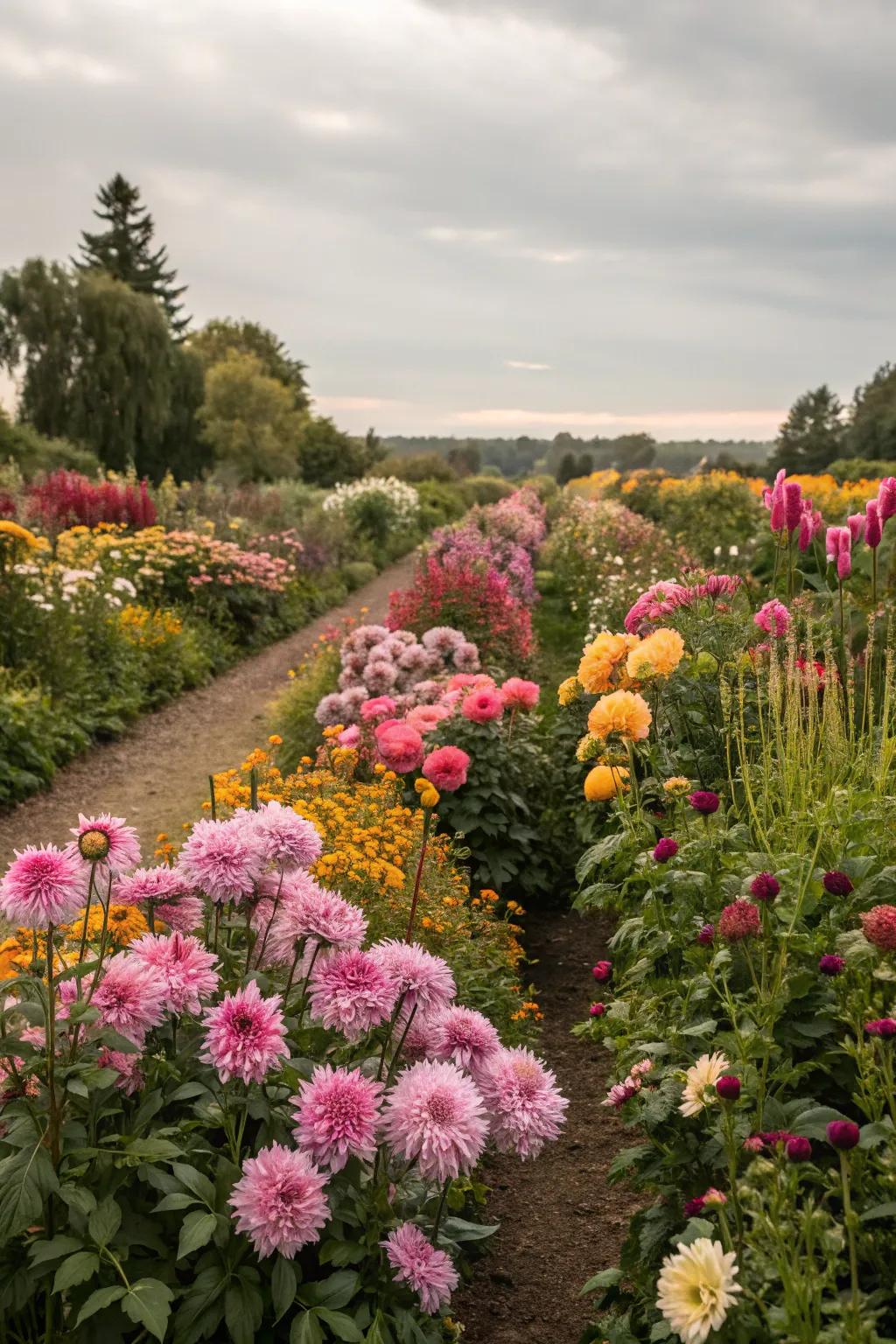
Plant seasonal blooms for year-round color. I adore the changing tapestry of flowers that keep my garden vibrant through the seasons.
A few things you might like:
- Perennial Flower Seed Mix: Cultivate vibrant blooms all year with this diverse mix of perennial flower seeds.
- Garden Hand Tool Set: Equip yourself with essential tools to maintain your garden’s seasonal bloom beauty.
- Organic Flower Fertilizer: Nourish your seasonal blooms with organic fertilizer for enhanced growth and color.
